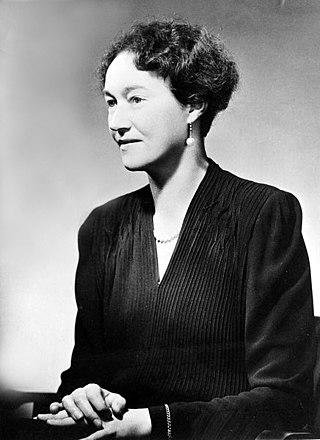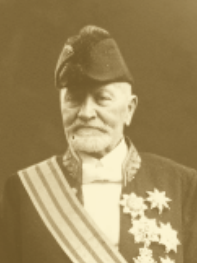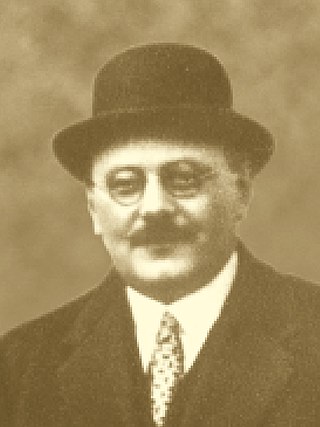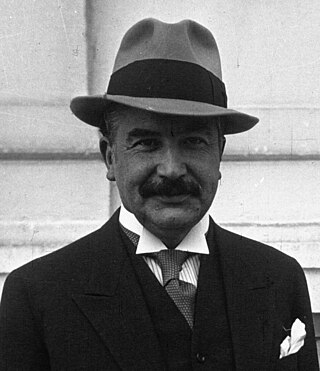Related Research Articles
Luxembourg is a parliamentary representative democratic monarchy, whereby the prime minister is the head of government, and the multi-party system. Executive power is under the constitution of 1868, as amended, exercised by the government, by the grand duke and the Council of Government (cabinet), which consists of a prime minister and several other ministers. Usually, the prime minister is the leader of the political party or coalition of parties having the most seats in parliament. Legislative power is vested in both the government and parliament. The judiciary is independent of the executive and the legislature.

Marie-Adélaïde, was Grand Duchess of Luxembourg from 1912 until her abdication in 1919. She was the first Grand Duchess regnant of Luxembourg, its first female monarch since Duchess Maria Theresa and the first Luxembourgish monarch to be born within the territory since Count John the Blind (1296–1346).

Charlotte was Grand Duchess of Luxembourg from 14 January 1919 until her abdication on 12 November 1964.

The Chamber of Deputies, abbreviated to the Chamber, is the unicameral national legislature of Luxembourg. The metonym Krautmaart is sometimes used for the Chamber, after the square on which the Hôtel de la Chambre is located.

The National Union Government was a form of national government headed by Victor Thorn that governed the Grand Duchy of Luxembourg between 24 February 1916 and 19 June 1917, at the height of the First World War. At the time, Luxembourg was occupied by the German Empire, but the occupying Germans had promised not to interfere in the country's political machinations, provided that the Luxembourgish government did not aid Germany's enemies. Nonetheless, political life was dominated by the crisis that had enveloped Europe.

Hubert Loutsch was a Luxembourgish politician. He was the tenth prime minister of Luxembourg, serving for 16 weeks from 6 November 1915 until 24 February 1916.

Victor Thorn was a Luxembourgish politician. He was the 11th prime minister of Luxembourg, serving for one year, from 24 February 1916 until 19 June 1917.

Léon Kauffman was a Luxembourgish politician. He was the 12th prime minister of Luxembourg, serving for one year, from 18 June 1917 until 28 September 1918.

Pierre Prüm was a Luxembourgish politician and jurist. He was the 14th prime minister of Luxembourg, serving for a year, from 20 March 1925 until 16 July 1926.

From August 1914 until the end of World War I on 11 November 1918, the Grand Duchy of Luxembourg was under full occupation by the German Empire. The German government justified the occupation by citing the need to support their armies in neighbouring France, although many Luxembourgers, contemporary and present, have interpreted German actions otherwise.
Émile Servais was a Luxembourgish left liberal politician. He was an engineer by profession.
The Liberal League was a political party in Luxembourg between 1904 and 1925. It was the indirect predecessor of the Democratic Party (DP), which has been one of the three major parties in Luxembourg since the Second World War.
General elections were held in Luxembourg on 23 December 1915. The Party of the Right emerged as the largest party, winning 25 of the 52 seats in the Chamber of Deputies.

The Prüm Ministry took office in Luxembourg on 20 March 1925. It was formed after the Chamber elections of 1 March 1925 and was supported by the Independent National Party, the Liberals, the Socialists and elements of the Party of the Right. It resigned on 16 July 1926, as the Liberals and Socialists could not agree over a bill for workers' holiday.

The Kauffman Ministry was in office in Luxembourg from 19 June 1917 to 28 September 1918.

The Bech Ministry was the government of Luxembourg that came into office in Luxembourg on July 16, 1926 after the resignation of the Prüm Ministry, and was headed by Joseph Bech. It was reshuffled on April 11, 1932 and on December 27, 1936. It stepped down after the referendum on the so-called Maulkuerfgesetz, in which the majority of voters decided against the law.

The Reuter Ministry was the government in office in Luxembourg from 28 September 1918 until 20 March 1925, headed by Émile Reuter. It resulted from the Chamber elections of 28 July and 4 August 1918 and was reshuffled on 5 January 1920 as a result of the elections of 26 October 1919. There was a further reshuffle on 15 April 1921, when the Liberals left the government.
The Maulkuerfgesetz was a proposed 1937 law in Luxembourg. Officially, it was entitled the "Law for the Defence of the Political and Social Order" but was nicknamed Maulkuerfgesetz by its opponents. The law would have allowed the Luxembourgish government to ban the Communist Party and dissolve any political organisation which they believed might endanger the constitutional institutions. The members of these parties or organisations would be stripped of their political offices and could not be employed by the state or by local governments.
Aloyse Hentgen was a Luxembourgish politician.
The Luxembourg rebellions were a series of riots and mutinies in Luxembourg from 1918–1919, inspired by the German Revolution of 1918–1919. The rebellions failed, mainly due to the lack of public support as well as France intervening in support of the government.
References
- 1 2 3 4 5 6 7 Thewes, Guy (2011). Les gouvernements du Grand-Duché de Luxembourg depuis 1848 (PDF) (in French). Service Information et Presse. pp. 66–67. ISBN 978-2-87999-212-9. Archived from the original (PDF) on 2017-01-11. Retrieved 2016-01-02.